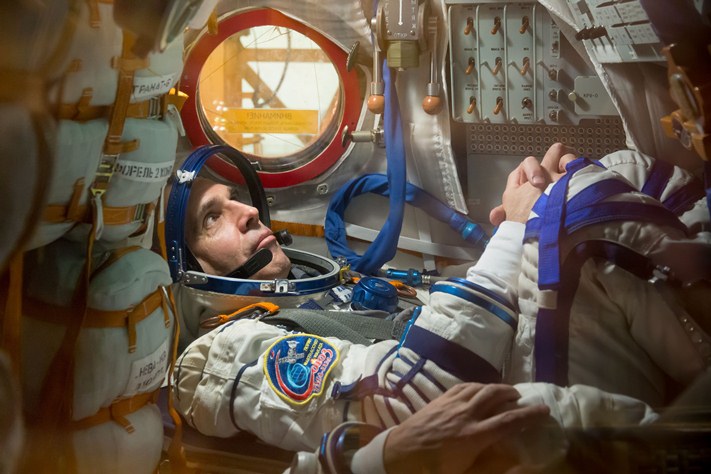Russian capsule landing
 Photo: Rick Mastracchio, NASA astronaut
Photo: Rick Mastracchio, NASA astronaut
Russian spacecraft landing capsule touchdown in Kazakhstan seems not to be a fear but quite an exciting moment. Expectation of touchdown is overestimated by all cosmonauts and astronauts who fly for the first time. It is strong. It is firm. Of’ course, during parachute landing phase it is similar to a roller-coaster but touchdown itself feels nice and comfortable. For this purpose, there are Russian manned spaceship landing aids that make it this way.
The Russian Soyuz spaceship landing aids ensure the crew’s safe landing in the descent module for the following cases: nominal deorbit; during launch vehicle failure either at the launch pad or during insertion.
Russian spacecraft descent capsule ballistic landing is quite a Russian roulette – you never know where you gonna fall on Earth. A few NASA astronauts experienced ballistic landing inside the Russian capsule. The positive thing is that it is safe and you will land for sure but falling like a piece of rock. Ballistic landing profile is much steeper than nominal re-entry profile. The trajectory of the falling capsule during ballistic landing is as if you’re throwing up a stone and it falls vertically back down to the ground. Crew members inside the capsule experience 8g load at this moment that lasts several minutes. It’s getting really hot inside the capsule – feels like in Russian sauna. Russian search and rescue team captures capsule’s coordinates. During last ballistic capsule landing when Russian capsule touched down in Kazakhstan it took 3 hours for the rescue team to get to the capsule – it landed 300 km away from the nominal landing calculated spot.
Landing aids consist of the following:
Primary parachute system
Backup parachute system
Soft landing engine assembly
Cosmonaut shock-absorbing seat
Landing aids automatic equipment
Structural elements.
The primary parachute system consists of three parachutes: the pilot chute, the drogue chute and the main parachute. The primary parachute system ensures that the vertical velocity is reduced to 7.6 m/sec.
Soft landing engine assembly
The soft landing engine assembly further reduces landing capsule's velocity to ~1.4m/sec at landing. It consists of six solid-fuel rocket thrusters; four are single-mode thrusters and two are three-mode thrusters. The thrusters are installed on descent capsule bottom under the heat shield and are divided into two groups. The three-mode thrusters consist of two isolated combustion chambers accommodated in one housing, each of which can operate independently of the other.
Shock-absorbing seats
The shock-absorbing seat is the cosmonaut work place and bears the g-loads during orbital insertion and landing phases. There are three seats in the Russian descent capsule. The seats have two positions: lowered (“non-cocked”) and raised (“cocked”). The lowered position is optimum for withstanding long duration g-loads and enables the crew to operate controls comfortably. The raised position is optimal for withstanding g-loads during landing impact. The raising of the seat is performed by a pyro system.

Photo: Russian manned spacecraft seat liner molding in process